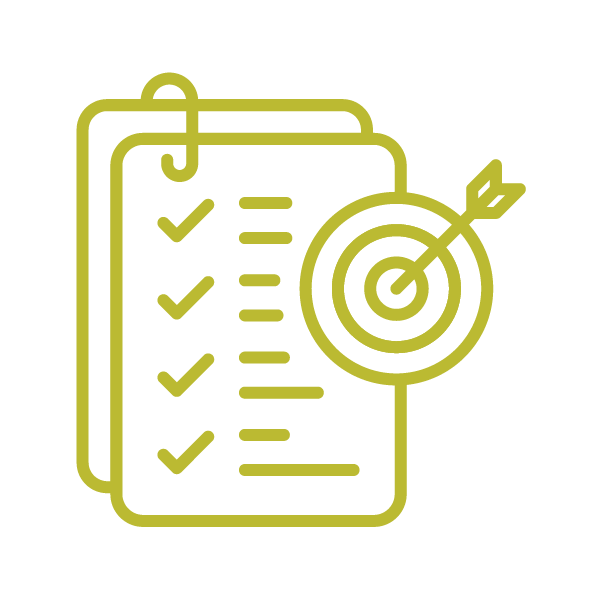SHAPE America National Health Education Standards
Standard
1
Use functional health information to support health and well-being of self and others.

Rationale: The acquisition and application of functional health information provides a foundation for promoting health and well-being. This standard includes essential concepts based on established theories and models of health behavior and health promotion. It focuses not
only on risk factors, but also on protective factors that can support health and wellness. Concepts reflected in this standard include health literacy, health promotion, health equity, social determinants of health, well-being, and health outcomes within individual, interpersonal, community,
societal, and environmental contexts. Functional information can be applied to health-related skills, such as analyzing influences, accessing resources, interpersonal communication, decision-making, goal setting, engaging in health practices and behaviors, and advocacy.
Performance Indicators by Grade Span:
Grades PreK-2
1.2.1 Identify strengths and assets that support health and well-being.
1.2.2 Identify dimensions of wellness.
1.2.3 Identify ways to prevent or reduce risks for illnesses and injuries.
1.2.4 Describe health-promoting behaviors.
1.2.5 Explain the importance of health and well-being.
1.2.6 Identify how the environment affects personal and community health.
1.2.7 Explain when it is important to seek health care.
Grades 3-5
1.5.1 Explain how to build upon strengths and assets to support health and well-being.
1.5.2 Describe health-promoting behaviors for the dimensions of wellness.
1.5.3 Explain ways to prevent or reduce risks for illnesses and injuries.
1.5.4 Explain ways to engage in health-promoting behaviors, including how to manage health conditions.
1.5.5 Examine how health literacy supports health and well-being.
1.5.6 Examine how the environment affects personal and community health.
1.5.7 Explain when and why it is important to seek health care.
Grades 6-8
1.8.1 Analyze ways to build upon strengths and assets to support individual and collective health and well-being.
1.8.2 Analyze how practices and behaviors support a variety of dimensions of wellness.
1.8.3 Analyze behaviors that reduce or prevent illnesses and injuries.
1.8.4 Analyze practices and behaviors that support health and well-being, including how to manage health conditions.
1.8.5 Analyze connections between health literacy and health outcomes.
1.8.6 Analyze how individual, interpersonal, community, and environmental factors impact health and well-being.
1.8.7 Explain how health care promotes personal health.
Grades 9-12
1.12.1 Apply ways to build upon strengths and assets to support individual and collective health and well-being.
1.12.2 Analyze the relationships between various dimensions of wellness as related to health outcomes.
1.12.3 Evaluate behaviors that reduce or prevent illnesses and injuries.
1.12.4 Evaluate practices and behaviors that support health and well-being, including how to manage health conditions.
1.12.5 Examine connections between individual health literacy, organizational health literacy, and health outcomes.
1.12.6 Analyze how individual, interpersonal, community, societal, and environmental factors are interrelated and impact health outcomes.
1.12.7 Analyze the benefits of and barriers to practicing a variety of health behaviors.
1.12.8 Examine how self-efficacy, perceived susceptibility, and perceived severity affect health behaviors.
1.12.9 Analyze the relationship between access to health care and overall health and well-being.
Standard
2
Analyze influences that affect health and well-being of self and others.

Rationale: Health and well-being are affected by many, diverse influences within individual, interpersonal, community, societal, and environmental contexts. This standard focuses on identifying and evaluating internal and external factors influencing health practices and behaviors. Influences on health and well-being may include but are not limited to: personal values and beliefs, perceived and social norms, family, peers, schools, communities, culture, media and technology, policies, and the environment. This standard recognizes that the factors affecting health behaviors and outcomes, such as social determinants of health, are complex and impact people and communities differently. It also supports the individual’s ability to identify and use skills to recognize the types of influences, analyze the role of influences across a variety of wellness dimensions, and manage influences on health and well-being in digital and in-person settings. This skill contributes to a better understanding of the connections between individual health, community health, and health equity, which can strengthen use of other health skills, such as accessing information and advocacy.
Performance Indicators by Grade Span:
Grades PreK-2
2.2.1 Identify various influences that affect health and well-being.
2.2.2 Determine the ways various influences affect personal health and well-being.
2.2.3 Explain how various influences affect the health and well-being of others.
Grades 3-5
2.5.1 Explain how various influences affect health and well-being.
2.5.2 Determine the ways various influences affect the health and well-being of self and others.
2.5.3 Explain how influences affect the health and well-being of people and communities in different ways.
2.5.4 Use strategies and resources to manage influences that impact health and well-being.
Grades 6-8
2.8.1 Analyze the interrelationships between various influences on health and well-being.
2.8.2 Analyze individual, interpersonal, community, societal, and environmental factors that influence health behaviors, health outcomes, and health equity.
2.8.3 Analyze how various influences affect the health and well-being of people and communities in different ways.
2.8.4 Apply strategies and resources to manage influences that impact health and well-being.
Grades 9-12
2.12.1 Evaluate the interrelationships and impacts of various influences and health behaviors on health and well-being.
2.12.2 Evaluate how social determinants of health influence health behaviors, health outcomes, and health equity.
2.12.3 Evaluate how individual, interpersonal, community, societal, and environmental influences and factors affect health equity.
2.12.4 Formulate strategies to manage influences that impact health and well-being.
2.12.5 Use resources to manage influences that impact health and well-being.
Standard
3
Access valid and reliable resources to support health and well-being of self and others.

Rationale: Access to valid and reliable health information, products, services, and other resources is essential to promoting health and well-being, and preventing, detecting, managing, and treating health issues and conditions. Access to valid and reliable information, products, services, and other resources promotes health and well-being in individual, interpersonal, community, societal, and environmental contexts. This standard focuses on identifying, accessing, and evaluating valid and reliable resources, including managing misinformation and disinformation, within digital and in-person settings. Media and technology play a significant and increasing role in the way individuals learn about and connect with ourselves, others, and the world. This standard engages students in critical thinking around media messages and resources, including how they are accessed, evaluated, and used to support health and well-being.
Performance Indicators by Grade Span:
Grades PreK-2
3.2.1 Identify characteristics of trusted adults and other individuals who support health and well-being.
3.2.2 Demonstrate when and how to seek help from others at home, at school, or in the community.
3.2.3 Locate school and community health helpers.
Grades 3-5
3.5.1 Determine which trusted adults, other individuals, and other health resources are appropriate in various situations.
3.5.2 Locate home, school, and community resources to support health and well-being.
3.5.3 Determine the validity and reliability of health information, products, services, and other resources.
3.5.4 Explain how misinformation and disinformation affect health and well-being.
Grades 6-8
3.8.1 Describe situations that may require support from trusted adults, other individuals, and health professionals.
3.8.2 Identify supports and barriers to accessing valid and reliable health information, products, services, and other resources.
3.8.3 Access valid and reliable sources of health information, products, services, and other resources.
3.8.4 Analyze the validity, reliability, and accessibility of health information, products, services, and other resources.
3.8.5 Use strategies to manage misinformation and disinformation.
Grades 9-12
3.12.1 Analyze the accessibility of trusted adults, other individuals, health professionals, and other resources to promote health and well-being.
3.12.2 Analyze supports and barriers to accessing valid and reliable health information, products, services, and other resources.
3.12.3 Evaluate the validity, reliability, and accessibility of health information, products, services, and other resources.
3.12.4 Use valid and reliable sources of health information, products, services, and other resources.
3.12.5 Apply strategies to manage misinformation and disinformation.
Standard
4
Use interpersonal communication skills to support health and well-being of self and others.

Rationale: Effective communication promotes health and well-being in individual, interpersonal, community, societal, and environmental contexts. This standard focuses on expressive and receptive communication in digital and in-person settings. Combined with perspective-taking, communication skills help to recognize and strengthen interpersonal interactions, create and maintain relationships, express and interpret messages, and manage conflict. Developing communication skills helps individuals to see how they communicate and the ways in which their communication affects those around them.
Performance Indicators by Grade Span:
Grades PreK-2
4.2.1 Express thoughts, feelings, wants, and needs to support health and well-being of self and others.
4.2.2 Use active listening skills in a variety of situations.
4.2.3 Demonstrate communication skills and strategies to use if uncomfortable, unsafe, or harmed.
4.2.4 Recognize ways to communicate and respect the boundaries of self and others.
4.2.5 Demonstrate ways to show kindness and compassion.
Grades 3-5
4.5.1 Use effective communication skills to express thoughts, feelings, wants, and needs to support health and well-being of self and others.
4.5.2 Use active listening skills and strategies in a variety of situations.
4.5.3 Demonstrate how to ask for and offer assistance to support the health of self and others.
4.5.4 Demonstrate boundary-setting skills to communicate and respect the boundaries of self and others.
4.5.5 Demonstrate refusal skills to use in a variety of situations.
4.5.6 Demonstrate strategies to prevent, manage, or resolve conflict.
4.5.7 Demonstrate effective ways to communicate with kindness and compassion.
Grades 6-8
4.8.1 Use effective communication skills across various modes of communication to support health and well-being of self and others.
4.8.2 Apply active listening skills and strategies in a variety of interpersonal contexts.
4.8.3 Use various communication strategies to seek and offer support and assistance.
4.8.4 Demonstrate ways to communicate boundaries and consent for a variety of situations.
4.8.5 Use refusal skills and strategies in a variety of situations.
4.8.6 Use skills and strategies to prevent, manage, or resolve conflict.
4.8.7 Use collaboration skills in a variety of situations.
4.8.8 Use negotiation skills in a variety of situations.
4.8.9 Demonstrate strategies to communicate with others with different perspectives and values.
4.8.10 Demonstrate ways to communicate empathy and compassion.
Grades 9-12
4.12.1 Apply effective communication skills across multiple modes of communication and media formats to support health and well-being of self and others.
4.12.2 Apply communication skills and strategies within a variety of interpersonal contexts.
4.12.3 Demonstrate how to ask for and offer assistance to support the health of self and others.
4.12.4 Use communication skills related to communicating boundaries, expressing consent, and removing consent in a variety of situations.
4.12.5 Apply refusal skills and strategies in a variety of situations.
4.12.6 Apply skills and strategies to prevent, manage, or resolve conflict.
4.12.7 Demonstrate collaboration skills in a variety of situations.
4.12.8 Demonstrate negotiation skills in a variety of situations.
4.12.9 Adapt strategies to communicate with others with different perspectives and values in various contexts.
4.12.10 Communicate with empathy and compassion.
Standard
5
Use a decision-making process to support health and well-being of self and others.

Rationale: Effective decision-making is needed to identify, adopt, and maintain health-promoting behaviors. This standard includes skills and steps integral to the process of effective decision-making to support health and well-being. The decision-making process enables collaboration to improve quality of life within individual, interpersonal, community, societal, and environmental contexts.
Performance Indicators by Grade Span:
Grades PreK-2
5.2.1 Identify when a health-related decision is needed to maintain or improve health and well-being.
5.2.2 Recognize when help is needed for a health-related decision.
5.2.3 Describe options and potential outcomes for a health-related decision.
5.2.4 Choose an option that supports health and well-being.
Grades 3-5
5.5.1 Determine situations that require a thoughtful decision-making process to maintain or improve health and well-being.
5.5.2 Determine whether assistance or collaboration is needed in making a health-related decision.
5.5.3 Compare and contrast options and potential outcomes for a health-related decision.
5.5.4 Choose a health-promoting option when making a decision.
5.5.5 Reflect on the results of a health-related decision on self and others.
Grades 6-8
5.8.1 Explain how the use of a decision-making process affects health and well-being.
5.8.2 Determine when health-related situations require the application of a thoughtful decision-making process.
5.8.3 Use an individual, supported, or collaborative decision-making process to maintain or improve health and well-being.
5.8.4 Evaluate how various options may affect health-related outcomes at individual, interpersonal, community, societal, and environmental levels.
5.8.5 Identify supports and barriers that affect decision making at individual, interpersonal, community, societal, and environmental levels.
5.8.6 Evaluate the results of a health-related decision on self and others.
Grades 9-12
5.12.1 Analyze how health-related decisions may affect personal and community health and well-being from a variety of perspectives.
5.12.2 Determine when and why health-related situations require the application of a thoughtful decision-making process.
5.12.3 Apply an individual, supported, or collaborative decision-making process to maintain or improve health and well-being.
5.12.4 Analyze a variety of options based on priorities and potential outcomes when making a health-related decision.
5.12.5 Analyze the potential impact of a decision on the health and well-being at individual, interpersonal, community, societal, and environmental levels.
5.12.6 Develop a plan of action to implement a health-related decision.
5.12.7 Evaluate the impact of supports and barriers that affect decision making at individual, interpersonal, community, societal, and environmental levels.
5.12.8 Evaluate the effectiveness of health-related decisions.
Standard
6
Use a goal-setting process to support health and well-being of self and others.

Rationale: Goal-setting is a process to support short- and long-term health and well-being goals. In addition to achieving a goal, a goal-setting process includes using practices, habits, and routines in daily life. This standard includes the processes needed to plan, reach, and reflect on health goals. Setting goals is a flexible process, and considers personal and social factors affecting health and well-being. Goal-setting supports aspirations and future planning for health and well-being within individual, interpersonal, community, societal, and environmental contexts.
Performance Indicators by Grade Span:
Grades PreK-2
6.2.1 Determine a health behavior to change or reinforce.
6.2.2 Identify a goal that supports health and well-being.
6.2.3 Determine who can help when assistance is needed to achieve a health-related goal.
6.2.4 Describe actions that support reaching a health-related goal.
6.2.5 Take action to achieve a health-related goal.
6.2.6 Reflect on the results of goal-setting.
Grades 3-5
6.5.1 Set a goal and explain how the goal supports health and well-being.
6.5.2 Determine whether assistance or collaboration is needed in setting a goal that supports health and well-being.
6.5.3 Develop a plan that includes actions, resources, and progress-tracking toward attaining a health-related goal.
6.5.4 Identify supports and barriers that affect progress toward attaining a health-related goal.
6.5.5 Track progress toward attaining a health-related goal.
6.5.6 Reflect on the goal-setting process and outcomes.
Grades 6-8
6.8.1 Assess personal health and well-being to identify focus areas for goal-setting.
6.8.2 Analyze when individual, supported, or collaborative goal-setting is appropriate.
6.8.3 Develop a goal and explain how it supports health and well-being.
6.8.4 Develop a plan that addresses supports and barriers to attaining a health-related goal.
6.8.5 Monitor progress to determine whether a health-related goal or plan should be maintained or adjusted.
6.8.6 Examine the goal-setting process and outcomes on health and well-being.
Grades 9-12
6.12.1 Assess personal health, well-being, and factors for engaging in a goal-setting process.
6.12.2 Use an individual, supported, or collaborative goal-setting process as appropriate.
6.12.3 Develop a goal and analyze how it supports health and well-being.
6.12.4 Implement a plan that addresses supports and barriers to attaining a health-related goal.
6.12.5 Monitor progress and adjust the goal or plan as appropriate.
6.12.6 Evaluate the goal-setting process and outcomes on health and well-being.
Standard
7
Demonstrate practices and behaviors to support health and well-being of self and others.

Rationale: Developing health practices and behaviors can promote health and well-being over the lifespan and reduce risk to self and others. Practicing health behaviors is critical to incorporating health-promoting habits and routines into all dimensions of wellness. Due to the increasing influence of technology, it is crucial to develop and apply practices and behaviors that support media balance and digital wellness. This standard promotes individual and collective responsibility by encouraging the exploration and practice of skills and processes that support health and well-being in individual, interpersonal, community, societal, and environmental contexts.
Performance Indicators by Grade Span:
Grades PreK-2
7.2.1 Identify practices and behaviors that support health and well-being of self and others.
7.2.2 Demonstrate practices and behaviors that support health and well-being of self and others.
Grades 3-5
7.5.1 Examine practices and behaviors that support health and well-being of self and others.
7.5.2 Demonstrate practices and behaviors that support health and well-being of self and others.
Grades 6-8
7.8.1 Examine supports and barriers to health-related practices and behaviors.
7.8.2 Analyze practices and behaviors that support personal and community health and well-being.
7.8.3 Demonstrate practices and behaviors that support personal and community health and well-being.
Grades 9-12
7.12.1 Analyze supports and barriers to engaging in health-related practices and behaviors.
7.12.2 Evaluate practices, behaviors, and other factors supporting individual and collective health and well-being.
7.12.3 Adapt practices and behaviors to support individual and collective health and well-being.
7.12.4 Demonstrate a variety of practices and behaviors supporting individual and collective health and well-being.
Standard
8
Advocate to promote health and well-being of self and others.

Rationale: Advocacy skills are critical for promoting health and well-being within individual, interpersonal, community, societal, and environmental contexts. This standard helps learners develop and apply skills and strategies to increase agency and advocacy for self and others. Practicing advocacy helps students be informed, civic-minded members of their community, who are inclusive of individual, cultural, historical, and other differences.
Performance Indicators by Grade Span:
Grades PreK-2
8.2.1 Make requests to support personal health and well-being.
8.2.2 Identify a variety of ways to support others in making health-promoting choices.
8.2.3 Encourage others to make health-promoting choices.
Grades 3-5
8.5.1 Recognize situations in which advocacy supports the health and well-being of self and others.
8.5.2 Explain how collaboration and communication support advocacy.
8.5.3 Identify advocacy skills and strategies to support health and well-being.
8.5.4 Demonstrate how to advocate for health and well-being.
Grades 6-8
8.8.1 Analyze opportunities to advocate for the health and well-being of individuals, families, and communities.
8.8.2 Determine when individual or collaborative advocacy is appropriate to promote health and well-being.
8.8.3 Adapt advocacy skills and strategies for a variety of audiences and contexts.
8.8.4 Demonstrate advocacy skills and strategies to promote the health and well-being of self and others.
8.8.5 Evaluate the effectiveness of advocacy efforts for promoting health and well-being.
Grades 9-12
8.12.1 Examine a variety of factors that affect advocacy at individual, interpersonal, community, societal, and environmental levels.
8.12.2 Advocate for health issues either collaboratively or individually to promote health and well-being.
8.12.3 Customize advocacy skills and strategies for varying audiences and contexts.
8.12.4 Demonstrate self-advocacy skills and strategies to promote health and well-being.
8.12.5 Demonstrate advocacy skills and strategies to promote health and well-being at interpersonal, community, societal, and environmental levels.
8.12.6 Evaluate the process, outcomes, and impact of advocacy efforts at the individual, interpersonal, community, societal, and environmental levels.
8.12.7 Analyze the role of collaboration among different people in a community to prevent and solve community health issues.
The content of the National Health Education Standards is subject to copyright. All rights are reserved by SHAPE America. SHAPE America grants each user a limited right to use, copy, publish, distribute and display the Standards, Rationale, and Indicators for educational purposes and non-commercial purposes only, and provided that all such use shall contain the following acknowledgement:
National Health Education Standards are used under license from SHAPE America.
Please visit the SHAPE America website for public license details and permission requests.